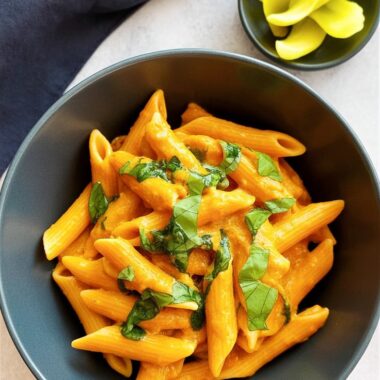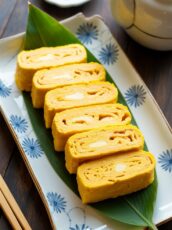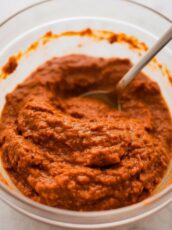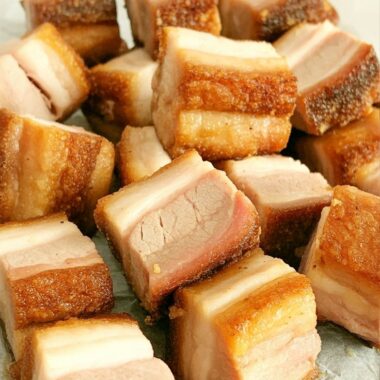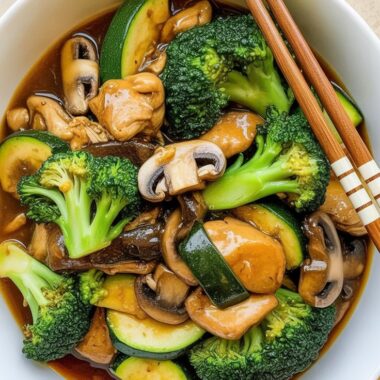There’s something oddly comforting about that little salad bowl you get at Japanese restaurants — crisp iceberg lettuce, maybe a tomato wedge, and that bold, zippy carrot ginger dressing poured over top. It’s always ice cold, sweet, tangy, and just the right kind of punchy. I’ve been hooked since the first time I had it.
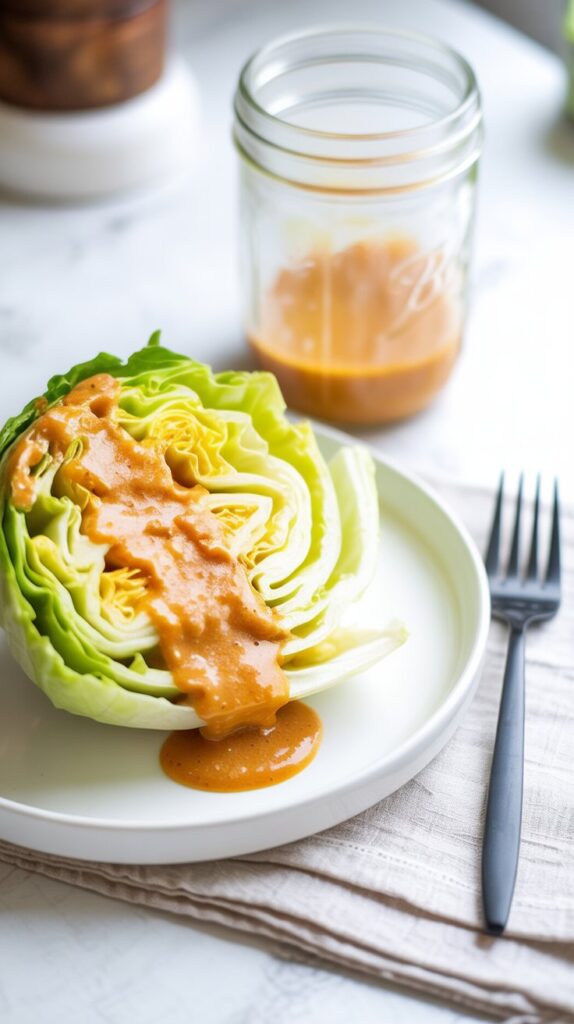
Back in college, a bunch of us used to hit up this Japanese joint after classes, scraping together our coins for the lunch specials. Miso soup, some rolls, and that iconic orange salad. Honestly, the salad dressing was what I looked forward to the most. Years later, I decided to recreate it — and to my surprise, it came together in under 10 minutes with stuff I already had in my kitchen.
This version is bold, balanced, and anything but bland. It clings to lettuce leaves just enough, has the right amount of ginger heat, and a brightness from vinegar that cuts through everything else on your plate. Let’s make it.
What You’ll Need to Make It
- Carrots (200g) – No need to be too neat here. Peel and roughly chop them. The blender’s going to do the heavy lifting anyway.
- Yellow onion (110g) – A sweet yellow onion works best, but I’ve used white in a pinch too.
- Fresh ginger (2 tbsp) – This is the backbone. I keep ginger in the freezer and just grate it in — sharp, aromatic, and clean-tasting.
- Sugar (1 tbsp) – Granulated keeps it neutral, but brown sugar gives a deeper note if that’s your thing.
- Soy sauce (1 tbsp) – I usually go for Kikkoman, but use what you have. It grounds the sweetness with that savory depth.
- Rice vinegar (3 tbsp) – That tangy kick. If you’ve only got seasoned vinegar, skip the sugar.
- Kosher salt (½ tsp) – If you’re using regular salt, start smaller and adjust. You don’t want it overly salty.
- Neutral oil (½ cup) – I stick to grapeseed or canola. Olive oil is too strong here — it overpowers the delicate balance.
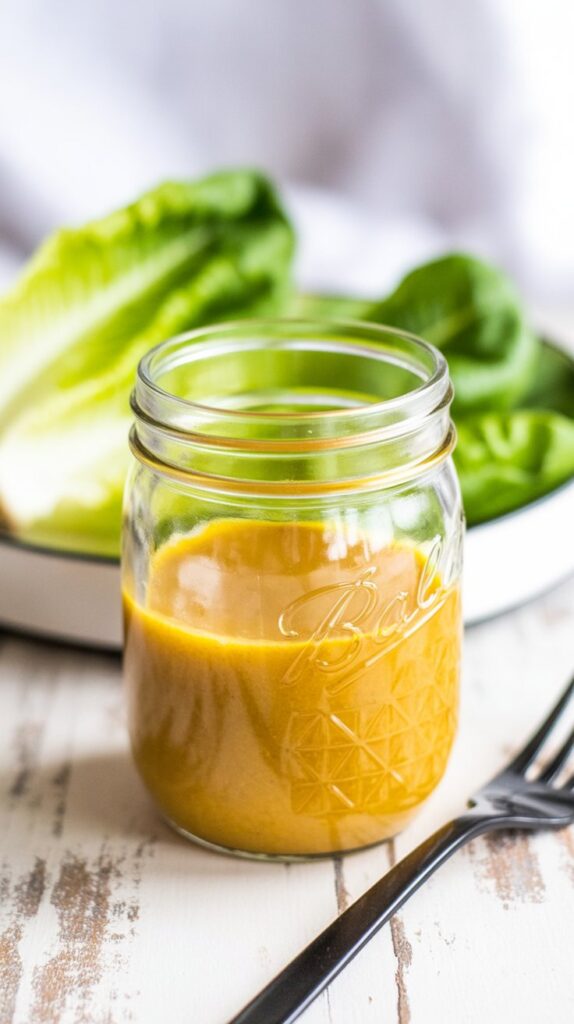
Add Your Own Twist
This dressing is super forgiving. Here are a few things I’ve tried (and loved):
- A drizzle of toasted sesame oil – Adds a nice nutty note, especially if you’re pairing this with grilled tofu or rice bowls.
- A spoonful of white miso – Makes the dressing creamier and really boosts the savory side.
- Swap the vinegar – Apple cider vinegar adds a fruity sharpness that’s especially nice over arugula or endive.
Gear You’ll Need
You really just need a blender. I’ve used my big blender, my old $25 one from college, and even a Nutribullet — they all work fine. Just go slow with the oil so it doesn’t split.
How I Make It
- Toss everything but the oil into the blender. Blend until smooth-ish — don’t turn it into soup.
- Drizzle in the oil while blending. Take your time here — a slow pour helps it emulsify and gives that silky texture.
- Taste and adjust. Need more zing? Add vinegar. Want it sweeter? A pinch more sugar. Too punchy? A little water mellows it out.
My Real-Life Tips
- Don’t overblend. I like it when the carrots still have a bit of texture. It clings to the salad better that way and feels more “real” than those overly smooth store-bought ones.
- Fresh matters. That leftover half-onion from three days ago won’t do. Fresh carrots and ginger make a big difference in flavor.
- Double it if you’re a meal prepper. It keeps well and saves you time later in the week.
How Long It Lasts
Once you’ve made it, pour it into a clean jar or bottle with a tight lid. It’ll stay fresh in the fridge for up to 2 weeks — though honestly, it never lasts that long in my house. I use it on everything from rice bowls to grilled chicken.

Favorite Ways to Use This Dressing
- The classic combo: Over a bed of chopped iceberg lettuce with a few cucumber slices — simple and perfect.
- Romaine or endives: Great swap for when I’m out of iceberg. Add a few mandarin segments or toasted seeds to make it fancier.
- With rice bowls: A spoonful on top of Japanese fried rice (yakimeshi) adds freshness.
- As a dip: Try it with crispy tofu, gyoza, or even sweet potato fries. Yes, seriously.
- Paired with heartier meals like curry rice or sticky chicken — this dressing adds a cool contrast.
Questions You Might Have
Can I freeze it?
I wouldn’t. The texture changes when thawed, and the oil might separate. Best to make small batches and store in the fridge.
Can I make it without oil?
It won’t have that creamy body, but you can reduce the oil a bit if you’re watching fats. Just know the texture will be thinner.
Can I use baby carrots?
Yes, but they tend to be sweeter. Keep an eye on the sugar and taste as you go.
My dressing is too thick — what now?
Add a splash of cold water and blend again until it loosens up. It’ll still be flavorful.
This carrot ginger dressing is something I make regularly — it’s fast, it’s flavorful, and it makes even a sad-looking fridge salad feel exciting. Hope you give it a go. And if you end up using it in a wrap or with grilled veggies, let me know. I’m always curious how others make it their own.
Japanese Ginger Dressing
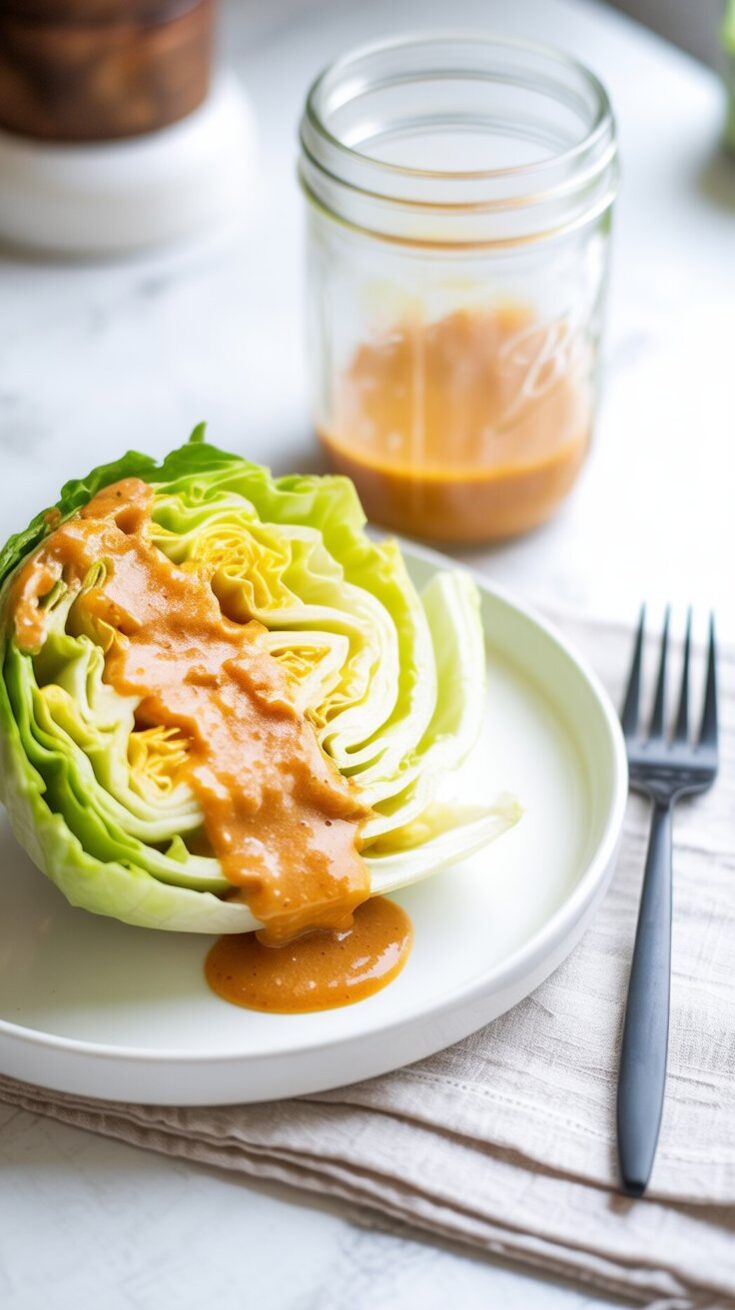
Capture the bright, sweet, and tangy flavors you love from Japanese restaurants with this easy carrot ginger dressing.
Ingredients
- 7 ounces carrots, peeled and roughly chopped
- 4 ounces onion, peeled and finely chopped
- 2 tablespoons fresh ginger, peeled and finely chopped
- 1 tablespoon granulated sugar
- 1/4 cup soy sauce
- 1/2 cup rice vinegar
- 1/2 teaspoon salt
- 3/4 cup canola oil or vegetable oil (preferably organic)
Instructions
- Blend the Veggies and Flavors: Place the chopped carrots, onion, ginger, sugar, soy sauce, rice vinegar, and salt into a blender. Pulse until completely smooth and well combined.
- Emulsify with Oil: With the blender running on low, gradually pour in the oil in a slow, steady stream. Continue blending until the dressing is thick, creamy, and fully emulsified.
- Serve or Store: Pour over your favorite crisp salad greens, toss to coat, or use as a dip. Store any leftover dressing in a sealed jar in the fridge for up to two weeks.
Nutrition Information:
Yield: 2 Serving Size: 1Amount Per Serving: Calories: 900Total Fat: 89gSaturated Fat: 7gTrans Fat: 0gUnsaturated Fat: 80gCholesterol: 0mgSodium: 2341mgCarbohydrates: 23gFiber: 4gSugar: 13gProtein: 4g
Asianplated.com, occasionally offers nutritional information for recipes contained on this site. This information is provided as a courtesy and is an estimate only. This information comes from online calculators. Although allchickenrecipes.com attempts to provide accurate nutritional information, these figures are only estimates.
Try other Japanese recipes:

